Each level of your spine functions as a three-joint complex. There are two facet joints in the back and a large disc in front that comprise each intervertebral segment. This tripod creates great stability, supports all your weight above each level and provides support for you to move in all directions. The posterior facet joints are synovial joints, similar to other joints in the human body. They experience constant, repetitive motion, and can become worn or torn. They also can become restricted in movement or develop too much movement resulting in pain. The facet joints are shaped and angled differently in the cervical, thoracic and lumbar spine. This allows for all of the available motion within the spine.
Pain stemming from the facet joints is termed “facet syndrome.” The facet joints become inflamed and may cause pain, soreness and stiffness. Patients often report increased pain with extension or prolonged periods of inactivity like sitting or standing too long. Changing positions often improves pain. Facet syndrome pain may feel worse in the morning and improve after moving around as the day progresses. However, for those who work sitting all day with poor posture, they may experience pain throughout the day. The lumbar spine has considerable motion and high compressive forces. Facet pain from these joints is quite common. Pain is usually felt directly over the affected joints, but may also be felt in the buttocks, hips, groin, and back of the thighs depending on which facet joint is injured.
Facet syndrome can be caused by trauma. Abnormal postures can overload spinal tissues, including the facet joints, and cause inflammation and pain in these joints. More commonly, degenerative changes in the lumbar spine can lead to abnormal stress and strain. This results in increased loads on the facet joints.
Most conservative treatments for facet syndrome involve postural correction, soft tissue massage and manipulation of the affected areas. This includes physical therapy, Chiropractic care and specialized treatments such as laser therapy, shockwave therapy and spinal decompression.
